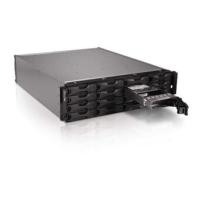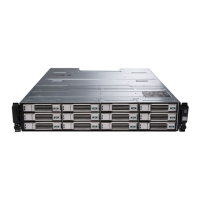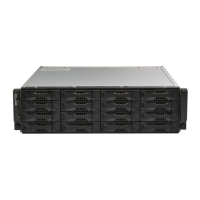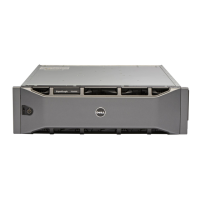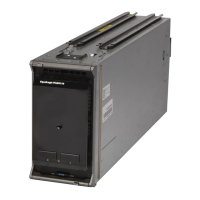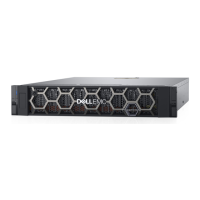PS6500 Hardware Maintenance Maintaining the EIP Card
6-3
EIP Card Status
You can identify an EIP card failure by:
• LEDs. The EIP card hardware status LED is yellow, and the Fault LED on the EIP card is yellow. See EIP
Card LEDs on page 6-1.
• Messages. A message on the LCD panel (located behind the bezel), on the console, in the event log, or in the
Group Manager GUI Alarms panel describes an EIP card failure.
• Group Manager GUI and CLI output. The Member Enclosure window or
member select show
enclosure
command output shows a failure.
Array Behavior When an EIP Card Fails
If an EIP card fails, the array will continue to operate. Contact your PS Series support provider for a replacement.
Replace a failed EIP card as soon as possible.
Note: Do not remove a failed EIP card until you are ready to replace it.
EIP Card Handling Requirements
Follow these EIP card handling requirements:
• Protect the EIP card from electrostatic discharge. When handling an EIP card, always wear an electrostatic
wrist strap or a similar protective device. See Protecting Hardware from Electrostatic Discharge on page 1-7.
• Handle EIP cards carefully. Hold an EIP card only by the mounting bracket. Do not force an EIP card into a
slot.
• Store EIP cards properly. Store an EIP card in its original packaging or in an antistatic bag or place the EIP
card on a surface protected from electrostatic discharge.
Replacing the EIP Card
You can replace a failed EIP card without affecting array operation.
Notes: For proper array cooling, minimize the time that the chassis is open.
Do not remove a failed EIP card until you are ready to replace it.
To remove an EIP card:
1. Use an electrostatic wrist strap or a similar protective device. See Protecting Hardware from Electrostatic
Discharge on page 1-7.
2. Remove the bezel. See Removing and Installing the Bezel on page 1-8.
3. Unlock and open the chassis. See Opening and Closing the Chassis Cover on page 1-9.
4. Use a Phillips screwdriver to release the EIP card thumbscrew shown in Figure 6-3.
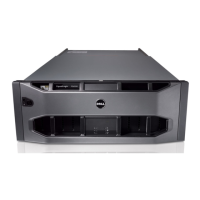
